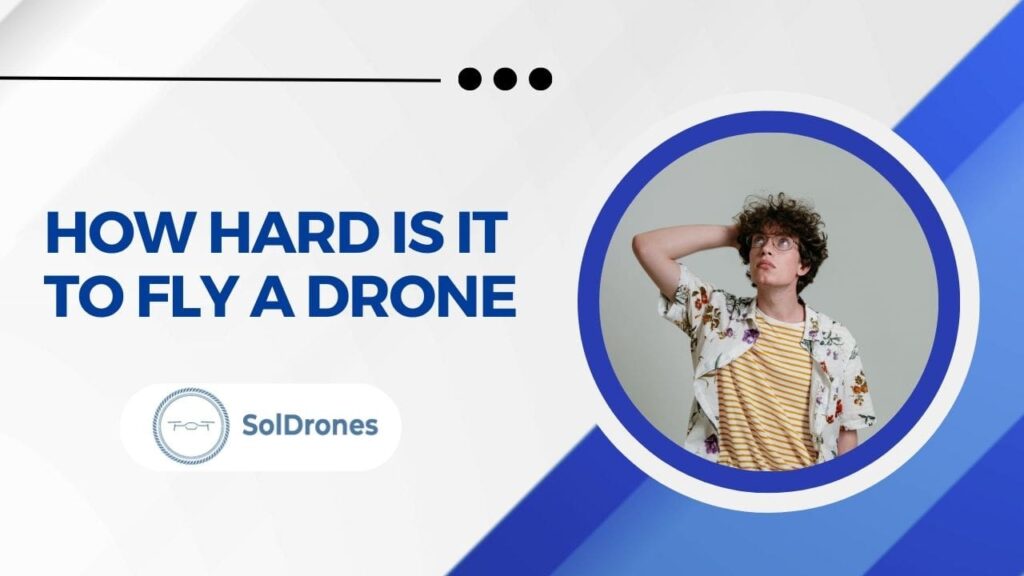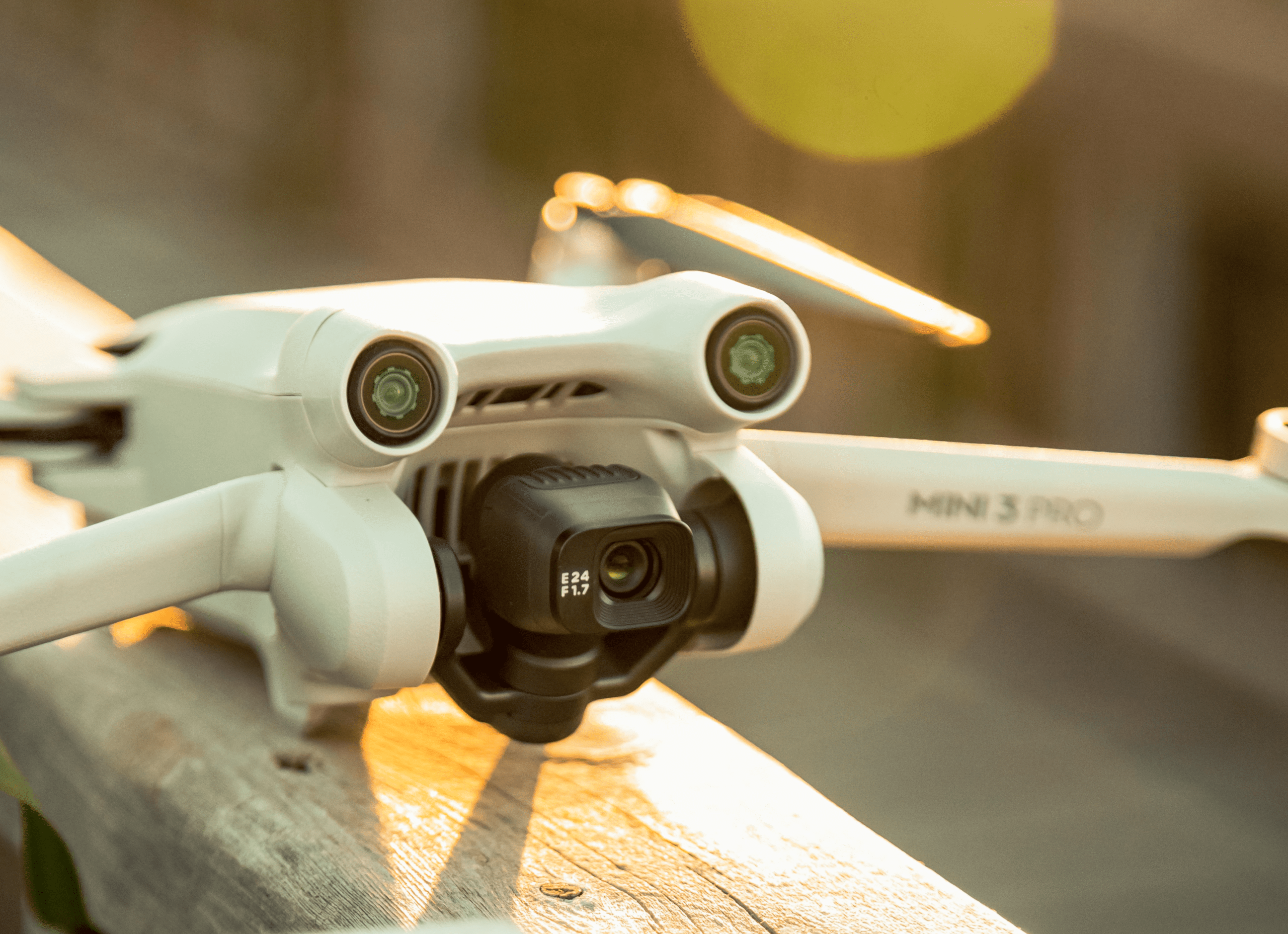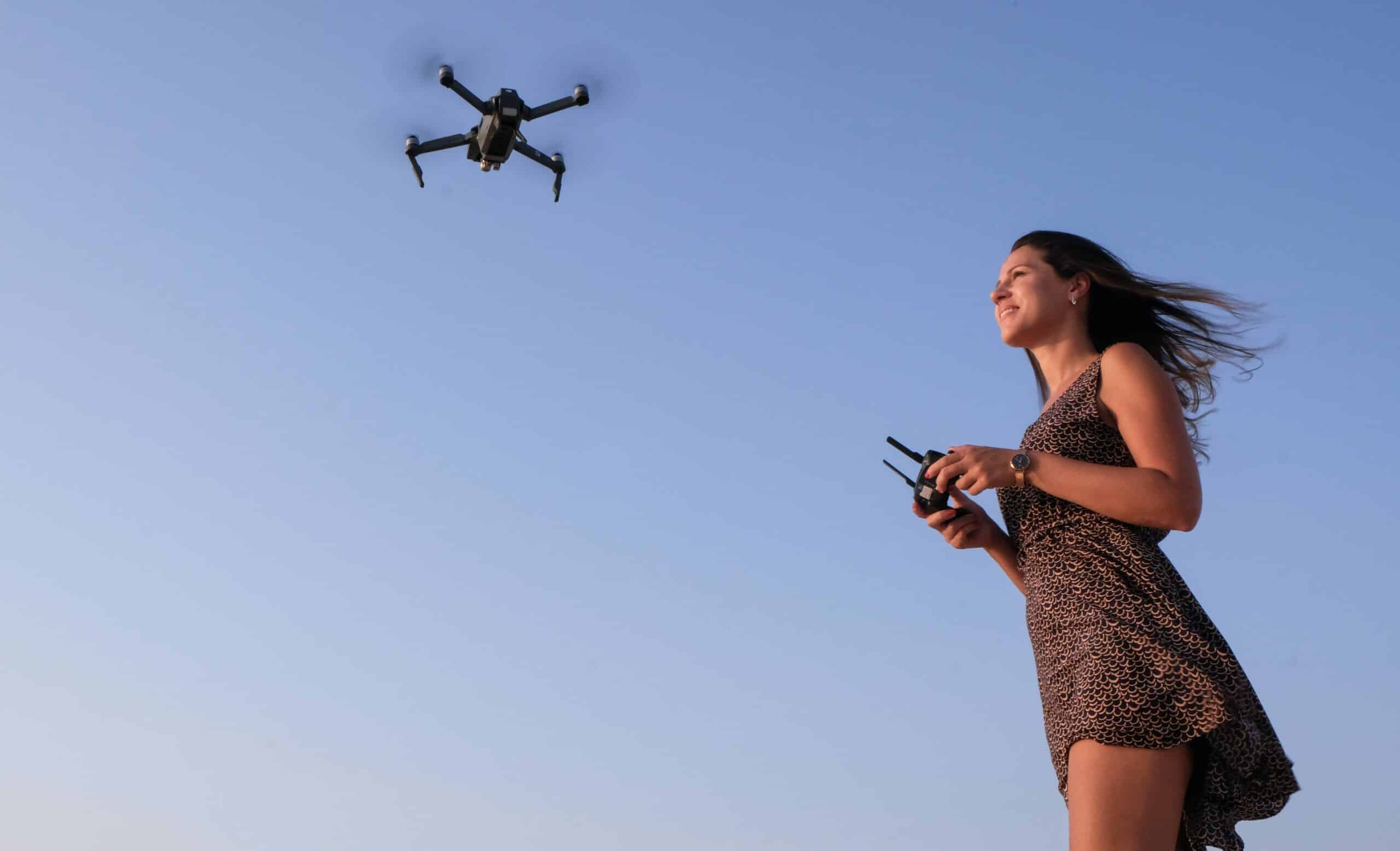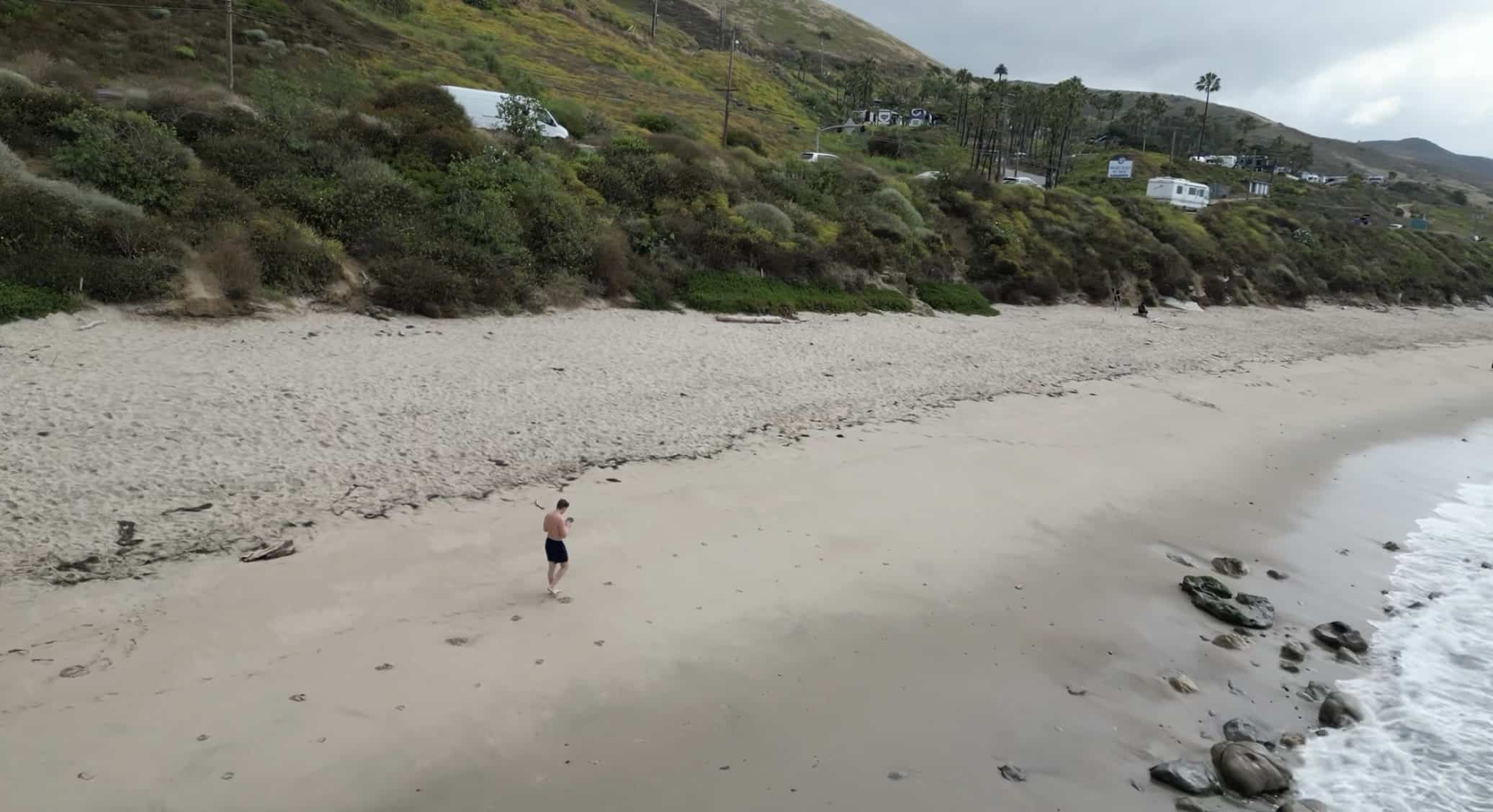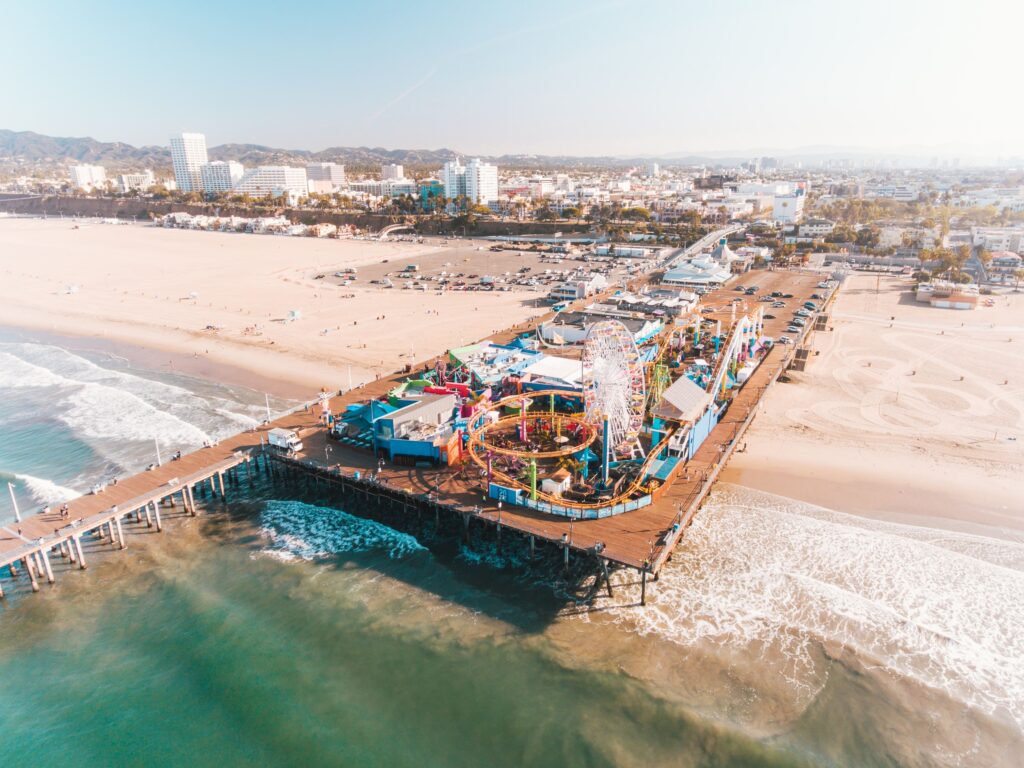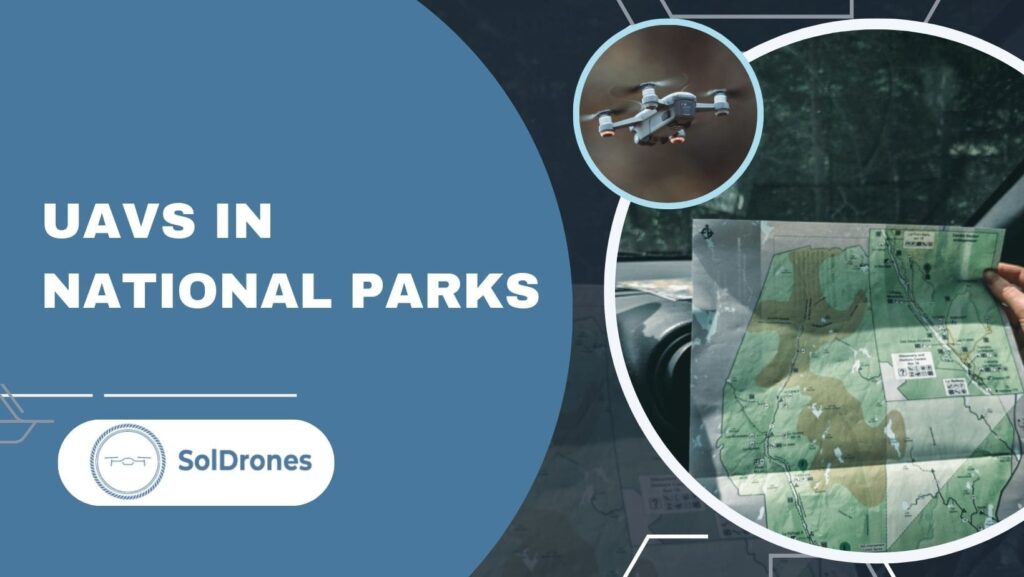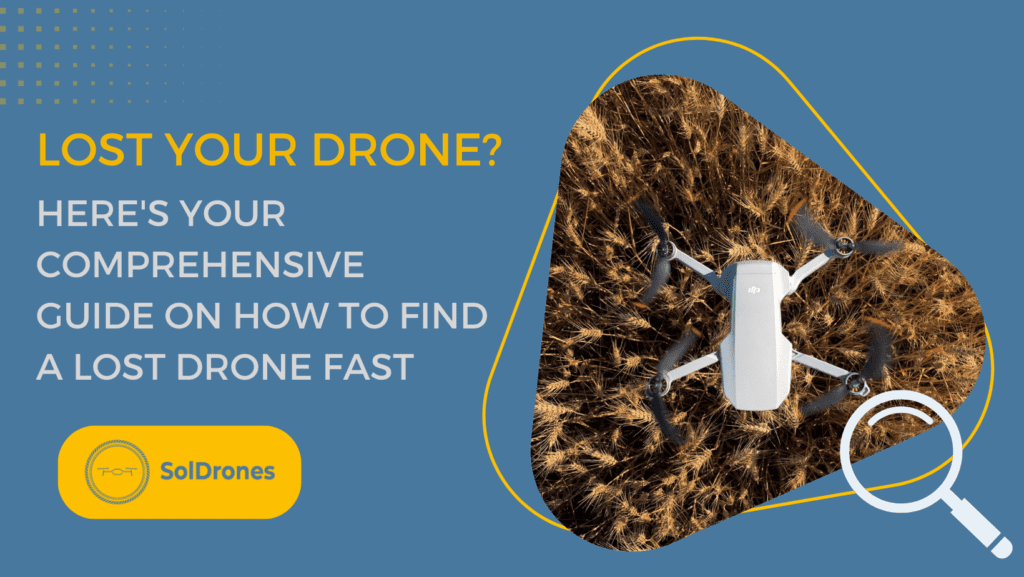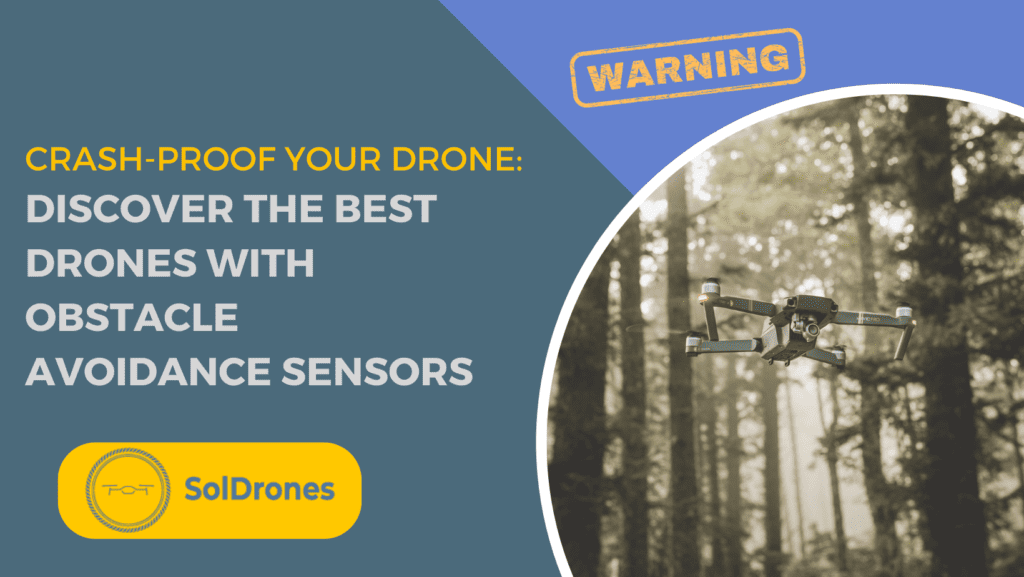If you’re just starting off your career as a drone pilot, get ready for one of the greatest investments you’ll ever make in the way you spend your time.
Drones unleash new perspectives that you don’t even feel while visiting certain places.
Flying drones is fun, creative, methodical, but also challenging.
Oh, and flying drones can be pretty lucrative if you turn your hobby into a business. If you don’t know where to start, check out our guide on drone business ideas to get the creative juices flowing.
Stepping into the world of drone flying might seem a bit overwhelming at first, but don’t worry.
If your on the market for a new drone, some of the most beginner friendly drones are:
This guide is your friendly co-pilot, ready to unfold the secrets of keeping these swift gadgets soaring through the skies and ensuring their graceful return to the ground.
We’ll guide you through each thrilling step, from your initial takeoff to mastering flawless landings.
So gear up for an exciting journey above the clouds – it’s time to fly drones above that big, blue sky!
Article Highlights:
- Discover the thrill of drone flying, from initial takeoff to mastering landings, with tips for every aspiring pilot stepping into this exciting journey.
- Learn key safe and enjoyable drone flight practices, including choosing the right drone, practicing in open areas, and understanding local laws.
- Gain essential skills for confident flying, from hand-eye coordination to weather assessment, and explore affordable ways to start your drone piloting adventure.
Remember, every expert pilot started as a beginner – your journey to the skies is just beginning!
What Are the Best Practices in Flying Drones for Beginners?
To fly drones for the first time can be an exciting experience, but it’s important to approach it with caution and knowledge.
Vince Opra dropped this video years ago covering the exact question: how hard is it to fly a drone?
Video Credit: Vince Opra
Here are some best practices for beginners to ensure a safe and enjoyable flight:
- Start with a Beginner-Friendly Drone: Choose a drone that’s designed for beginners – these are usually more affordable and easier to control before jumping to advanced flying techniques.
- Read the Manual: Familiarize yourself with your drone’s features and controls. Understanding how your drone works is crucial for safe operation.
- Practice Flying in Open, Unpopulated Areas: Start flying in a wide-open space without obstacles like trees, power lines, or buildings. Avoid crowded places to reduce the risk of accidents.
- Learn Basic Maneuvers First: Start with simple movements like ascending, descending, and gentle turns before attempting more complex maneuvers.
- Keep Your Drone in Sight: Always maintain a line of sight with your drone. This helps you control it better and be aware of its position in relation to obstacles.
- Check Weather Conditions: Avoid flying a drone forward in high wind speed, rain, or extreme weather conditions. Good weather ensures a safer flight or drone operation.
- Understand and Follow Local Drone Laws: Be aware of and comply with local regulations regarding drone flight. This includes altitude limits, no-fly zones, and privacy laws.
- Use a Pre-Flight Checklist: Before each flight, check your drone’s battery levels, propellers, and remote control to ensure everything functions correctly.
- Learn from Simulators and Training Courses: Use drone simulators to practice your flying skills safely. Some online courses also provide valuable information for beginners.
- Have Patience and Practice Flying Regularly: Drone flying is a skill that improves with practice. Don’t rush your learning process; take the time to practice regularly and gradually improve your skills.
By following these best practices, you’ll be well on your way to becoming a proficient drone pilot, enjoying the skies safely and responsibly.
What Basic Skills Do I Need to Fly a Drone?
Mastering how to fly a drone backward and in other directions using different types of flying techniques starts with a foundation of essential skills.
Whether you dream of capturing stunning aerial footage or flying for fun, these core abilities are your first flight step to confidently taking to the skies.
#1) Hand-Eye Coordination
The art of safe flying hinges on your ability to precisely control its movements, a skill deeply rooted in strong hand-eye coordination.
This skill is vital as it enables you to swiftly respond to what you observe through the drone’s camera or from your line of sight.
It’s about synchronizing your hands’ movements with your visual input to execute smooth, controlled maneuvers, whether you’re navigating through tight spaces or capturing steady aerial footage.
#2) Understanding of Basic Controls
A thorough understanding of the drone’s remote control is essential to any drone pilot’s toolkit. This encompasses learning how to ascend into the sky, gently descend back to earth, and gracefully navigate a drone left or right.
It’s not just about pushing buttons and moving joysticks; it’s about developing a feel for how these inputs translate into the drone’s movements.
If your drone has intelligent flight features, you’ll definitely want to familiarize yourself with those. Arguably the most important feature would be the return home feature.
Mastering these controls is the cornerstone of confidence and a drone-safe operation.
#3) Spatial Awareness
Flying a drone extends beyond just moving it in the desired direction, it requires an acute awareness of its position in space relative to its surroundings.
This skill is crucial for safely navigating obstacles and ensuring the drone doesn’t venture into unsafe areas or risk collisions.
It’s about developing an intuitive understanding of the drone’s physical space and how it interacts with the environment around it.
#4) Reading Weather Conditions
Adept drone pilots are also part-time meteorologists, always keeping an eye on the weather. This skill involves assessing the suitability of weather conditions for flying.
Understanding how wind direction, rain, and other elements can impact drone performance is crucial. It’s about making informed decisions to ensure safe flights, knowing when it’s safe to soar and when it’s wise to stay grounded.
#5) Patience and Practice
Like learning any new skill, mastering drone flying doesn’t happen overnight. It requires a blend of patience and consistent practice.
Each flight session is an opportunity to learn and improve, refine techniques, and grow more comfortable and confident in your abilities as a pilot.
The journey from novice to expert is gradual, filled with learning experiences and incremental victories.
Developing these skills will set the foundation for a fulfilling and safe drone flying experience, enabling you to enjoy the freedom and creativity that comes with piloting these remarkable machines.
As you build these fundamental skills, you’ll feel more at ease with each flight, turning complex maneuvers into second nature. Remember, every expert pilot started as a beginner – your journey to the skies is just beginning!
Is it Worth It to Become a Drone Pilot?
Oh course, this question depends on you and your personality. If you’ve gotten this far, then it’s very likely that the answer is an astounding yes! Becoming a drone pilot is definitely worth it for many people.
The journey offers a unique blend of technical skill, creativity, and the thrill of seeing the world from new perspectives.
Whether for professional purposes like drone photography and drone surveying or for personal enjoyment and exploration, drone piloting opens up a range of exciting opportunities.
By stepping into the role of a drone pilot, you embark on an adventure that combines technology, art, and the great outdoors.
It’s a pathway that promises endless possibilities and rewarding experiences, making every flight worthwhile.
Is It Expensive to Get Started with Drone Flying?
No, getting started with drone flying doesn’t have to be expensive. There are options for every budget, allowing enthusiasts from all walks of life to experience the joy of drone piloting.
- Drone Model and Features: Entry-level drones are quite affordable, though modern drones with features like better cameras and longer flight times can be pricier.
- Accessories and Spare Parts: Consider the cost of additional batteries, propellers, and storage cases for a better flying experience and longevity.
- Training and Licensing Fees: Depending on your country, you might need to pay for a drone piloting license or training courses, especially for more advanced drone airborne operations.
- Insurance: Some drone pilots opt for insurance to cover potential damage or liability, which can be an additional cost.
- Maintenance and Upgrades: Regular maintenance and occasional upgrades to keep your drone in top condition can add to the overall expense.
While there are initial costs to consider, the investment in drone flying can be tailored to your budget and interest level. With various options available, the sky’s the limit for aspiring drone enthusiasts looking to embark on this exciting journey!
How Long Does It Take to Learn to Fly a Drone?
The time it takes to learn to fly a drone safely can vary widely, but most beginners can grasp the basics within a few hours to a couple of days of practice. The learning curve depends on the individual’s technical aptitude, coordination skills, flight duration, and the complexity of the drone.
With drones like the DJI Mini 3 Pro, you can capture some pretty stunning videos after just a few flights!
As you progress, remember that each flight is a learning experience. With patience and practice, you’ll soon be flying with greater confidence and skill, making every moment in the air both enjoyable and rewarding.
At What Age Can A Person Legally Begin Flying Drones?
In the United States, individuals must be at least 16 years old to obtain a Remote Pilot Certificate from the Federal Aviation Administration (FAA) for commercial drone operations.
However, there is no specific age requirement for recreational flying, but an adult should always supervise younger pilots.
This age requirement ensures that drone pilots are mature and understand how most drones operate responsibly. It’s an important aspect of flying a drone safely for enthusiasts and the community.
Can I Fly a Drone in My Local Park or Backyard?
Yes, you can fly your first drone in your local park or backyard in the United States, as long as you’re not in a restricted area. Still, it’s subject to specific rules and regulations the Federal Aviation Administration (FAA) set.
Always check out the FAA’s B4UFLY app to make sure you’re in the clear.
These rules include not flying over unprotected people or moving vehicles, maintaining a visual line of sight with the drone, and avoiding restricted airspace.
Before you take to the skies, it’s crucial to familiarize yourself with these guidelines to ensure a safe and legal flying experience.
Remember, responsible flying not only protects your safety but also the safety of those around you.
Is There an App to Practice Drone Flying?
Yes, there are numerous drone flight simulators designed to help beginners practice flying a drone. These simulator apps provide a virtual platform to learn and master drone controls, offering a risk-free environment for honing your piloting skills.
DJI Flight Simulator
This app, created by DJI, a leading name in the drone industry, offers a remarkably authentic flying experience.
It’s designed to simulate various DJI drone models, allowing users to practice with the same type of drones they might own or intend to purchase.
The simulator includes diverse environments and weather conditions, adding to the realism of the experience.
DJI Flight Stimulator is an excellent tool for both beginners and experienced pilots looking to refine their skills or test new flight maneuvers in a safe, controlled setting.
Zephyr Drone Simulator
Zephyr stands out for its emphasis on detailed environments and realistic flying scenarios, making it a top choice for both entertainment and educational purposes.
The app caters to various skill levels, offering adjustable difficulty settings and various challenges that mimic real-world situations.
It’s also used in educational settings for drone training, thanks to its comprehensive flight dynamics and analytics that help users understand and improve their piloting skills.
DroneSim Pro
DroneSim Pro is known for its balanced approach, offering a realistic flying experience that is accessible to beginners yet challenging enough for seasoned pilots.
The app features detailed landscapes and various urban and rural scenarios, allowing pilots to practice in different environments.
It also includes features like adjustable wind speed and direction, allowing users to practice under various weather conditions, thereby enhancing their real-world flying competence.
RealFlight Drone Flight Simulator
This simulator is celebrated for its versatility and wide-ranging applicability. Both hobbyists and professionals favor it for its accurate physics and extensive selection of drone models.
The RealFlight Drone Flight Simulator also includes a variety of flying sites and challenges that mimic real-life scenarios, making it a comprehensive tool for honing piloting skills. It’s a robust platform for users who want to experiment with different types of drones and flying styles.
Liftoff Drone Simulator
Liftoff is particularly popular among drone racing enthusiasts because it focuses on high-speed, agile flying. The simulator offers an exhilarating experience with fast-paced, competitive scenarios that mimic the thrill of drone racing.
It includes customizable drone models, allowing users to tweak their best drones for optimal performance. The app also features multiplayer modes, enabling beginner pilots to even novice pilots to compete against others worldwide, enhancing their skills in a dynamic and competitive environment.
By using these apps, you can significantly enhance your drone flying skills and knowledge, preparing you for the real experience in a safe and controlled manner. They’re a fantastic stepping stone to becoming a confident and skilled drone pilot.
Final Thoughts
It’s clear that this fascinating hobby is much more than just a pastime. It’s a blend of art and science, creativity and technical skill.
For beginners, the journey from holding a remote control for the first time to smoothly gliding through the skies can be as thrilling as it is enriching. This guide aims to demystify drone flying, equipping you with the knowledge, skills, and confidence to embark on your own aerial adventures.
Remember, the key to mastering drone flying lies in patience, practice, and a continual thirst for learning. The sky is not just a playground but a vast canvas waiting for your unique touch. Whether you’re capturing breathtaking landscapes, surveying land, or just soaring for pleasure, each flight is an opportunity to grow and experience the world from a fresh perspective.
So, embrace the challenges, revel in the successes, and always fly responsibly. The world of drone piloting is about reaching new heights and discovering new horizons within yourself. Happy flying!
FAQs
What kind of drone should I get as a beginner?
Skip the high-end models for now. Plenty of affordable beginner drones are perfect for learning the ropes. Look for one that’s lightweight, easy to control, and has built-in safety features like altitude hold and auto-return.
What are the common mistakes beginners make, and how can I avoid them?
Common mistakes include flying in poor weather, losing control or sight of the drone, and ignoring battery warnings. Avoid these by planning flights, maintaining line of sight, and monitoring battery levels.
How can I improve my drone flying skills?
Practice regularly, experiment with different settings, try new maneuvers in a safe environment, and learn from experienced pilots or online tutorials.
What should I do if I lose control of my drone?
Don’t panic. Try to regain control using the return-to-home feature or safely land the drone.
Are there legal flight restrictions on where I can fly a drone?
Yes, there are restrictions like no-fly zones near airports and crowded areas. Always check local laws and regulations.
How can I ensure my drone is safe to fly?
Conduct pre-flight checks, ensure the battery is fully charged, check for damage, and update software as needed.

